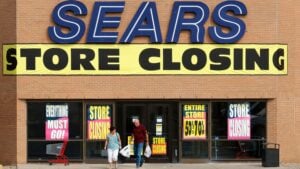
Walk through any construction site and you’ll be bombarded with signs warning against all sorts of dangers and imploring you to wear the appropriate safety gear to prevent costly accidents.
American Swiss vision surgery device manufacturer Alcon could have used a few warning signs in its intellectual property portfolio since the company is about to pay Johnson & Johnson $US199 million to settle legal disputes over software used in J&J’s LASIK surgery devices.
The quarrel traces back to a company called AMO Development, LLC which J&J acquired in 2017. AMO sued Alcon in 2020 for allegedly stealing thousands of lines of source code from J&J’s iFS LASIK vision correction system. AMO claimed the stolen code was deployed in software to run Alcon’s LenSx eye surgery.
The settlement is eye-wateringly expensive, but at least it prevented Alcon from following through with a pending copyright trial in Federal Court. That trial could have been orders of magnitude more costly for Alcon if it had come out on the losing side.
Both companies will be pleased to see the back of this settlement. But it’s also a good opportunity to talk about one of the fundamental principles of business: lawyers are like nuclear weapons.
Each side needs to have a legal team prepared to fight any conflict, yet they pray nobody is crazy enough to use them on the financial battlefield. At a certain level in the business world, mutually assured destruction is the only outcome once lawyers get involved. The parties were lucky the suits didn’t lead to annihilation.
But it all could have been avoided if they had each developed a better intangible asset protection strategy. Every business must be sure it can prove chain of title for its software.
An inability to guarantee ownership leaves a company open to numerous intangible asset risks, such as employees copying code and walking over to a competitor. Also, without knowing chain of title a company’s developers may be unwittingly using code built by other firms and risk getting bludgeoned by a nuclear lawsuit.
In Alcon’s case, spelling errors in the source code gave the game away, sparking the costly legal proceedings. J&J noticed typographical errors in Alcon’s code and made a solid case that these errors confirmed the code was identical to its own. The judge agreed.
That’s lesson number two: simple mistakes can be expensive. I don’t remember much from high school but hitting the F7 key to run a quick spell check is seared into my brain.
In the digital era, software code can be a company’s most important intellectual property and deserves hefty investment in its protection. Code can be the only competitive edge separating a company from hundreds of me-too competitor products or services.
Treating code security as an afterthought is like letting a cougar live in your house. You may never see the big cat and it may never ambush you. But all it takes for you to become kitty dinner is a little slip up.
There’s a reason Coca-Cola stores its original formula in a bank vault and why KFC’s 12 herbs and spices remain a closely guarded secret to this day. A company’s proprietary software should be treated in the same way.
If it’s unclear what constitutes “proprietary software” for your company, try asking a simple question: if an employee walked out the door with a set of code, would that theft cause massive and irreparable harm? If so, then the code should be protected like it represents life and death – because in many ways, it does.
In its expensive squabble about eye surgery system software, Johnson & Johnson was saved by its robust intangible asset strategy. The company successfully defended its intellectual property by proving that it was the true owner of the source code found on a competitor’s system.
Alcon may have thought it was using clean code. But because it lacked a proper protection strategy it walked into the kitchen one morning and encountered a waiting rabid cougar instead of a bowl of cornflakes.
Recommended Reads
Free 1hr Consultation
Intangible assets are a company’s greatest source of hidden value and hidden risk. Make the valuable visible in your organisation.
Sign-up for a free 1-hour consultation today.




